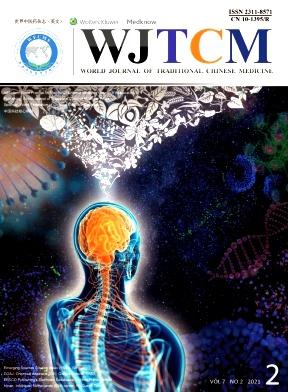Forsythosides as essential components of Forsythia-based traditional chinese medicines used to treat inflammatory diseases and COVID-19
IF 3.2
3区 医学
Q1 INTEGRATIVE & COMPLEMENTARY MEDICINE
引用次数: 3
Abstract
The dried fruits of the plant Forsythia suspensa (Forsythia Fructus: Lianqiao in Chinese) are used in many herbal preparations to treat various diseases or the associated symptoms. Forsythia extracts contain phenylethanoid glycosides (PhGs) such as the forsythosides (Fst A-to-P). The leading products, Fst-A,-B and-F (arenarioside), can be found also in >90 other plants inventoried here. The pharmacological properties of Fst are reviewed, with emphasis on their anticancer, antiviral, and antibacterial activities, which essentially derive from their anti-inflammatory and antioxidant effects. Fst-B functions as a potential binder of the repressor protein Kelch-like ECH-association protein 1 (Keap 1), thus promoting the nuclear translocation of the transcription factor Nuclear factor erythroid 2-related factor 2 (Nrf2) implicated in the subsequent activation of the production of antioxidant enzymes and repression of the oxidative stress. The regulation of the Nrf2/Heme oxygenase-1 pathway is the central piece of the multifaceted mechanism of action of Fst-A/B. Their prominent antioxidant and anti-inflammatory effects support the use of these compounds in different inflammation-related diseases and conditions, from sepsis to neuroprotection and many other pathologies discussed here. In addition, these properties contribute to the antiviral action of the compounds. Fst-A/B displays activities against the influenza A virus and different Fst-containing traditional Chinese medicinal (TCMs) have revealed beneficial effects to combat the current COVID-19 pandemic. The mechanisms whereby Fst-A/B could inhibit viral multiplication are discussed. PhGs likely contribute to the anti-COVID-19 activities reported with several TCM such as Shuang-Huang-Lian oral liquid, Lianhua-Qingwen capsules, and others. This review highlights the pharmacological profile of Fst and illustrates health benefits associated with the use of Forsythia Fructus.连翘苷作为连翘类中药治疗炎症性疾病和COVID-19的重要成分
连翘(Forsythia Fructus:连翘)的干果被用于许多草药制剂中,以治疗各种疾病或相关症状。连翘提取物含有苯乙醇苷(PhGs),如连翘苷(Fst A-to-P)。主导产品,Fst-A,-B和f(芳香菇苷),也可以在bbb90其他植物库存中找到。本文综述了Fst的药理特性,重点介绍了Fst的抗癌、抗病毒和抗菌活性,这些活性主要来源于其抗炎和抗氧化作用。Fst-B作为抑制蛋白kelch样ech结合蛋白1 (Keap 1)的潜在结合物,从而促进转录因子核因子红系2相关因子2 (Nrf2)的核易位,参与随后激活抗氧化酶的产生和抑制氧化应激。Nrf2/血红素加氧酶-1通路的调控是Fst-A/B多方面作用机制的核心部分。它们突出的抗氧化和抗炎作用支持这些化合物在不同炎症相关疾病和病症中的应用,从败血症到神经保护和这里讨论的许多其他病理。此外,这些特性有助于化合物的抗病毒作用。Fst-A/B显示出抗甲型流感病毒的活性,不同的含fst的传统中药(tcm)已显示出对抗当前COVID-19大流行的有益效果。本文讨论了fast - a /B抑制病毒增殖的机制。据报道,PhGs可能与双黄连口服液、莲花清瘟胶囊等几种中药的抗covid -19活性有关。这篇综述强调了Fst的药理学特征,并说明了连翘果的使用对健康的好处。
本文章由计算机程序翻译,如有差异,请以英文原文为准。
求助全文
约1分钟内获得全文
求助全文
来源期刊

World Journal of Traditional Chinese Medicine
Medicine-Complementary and Alternative Medicine
CiteScore
5.40
自引率
2.30%
发文量
259
审稿时长
24 weeks
 求助内容:
求助内容: 应助结果提醒方式:
应助结果提醒方式:


